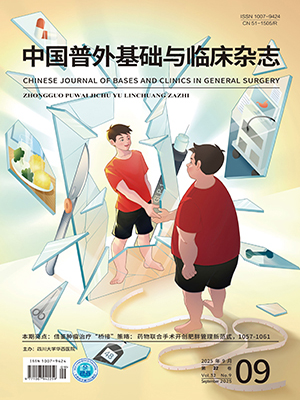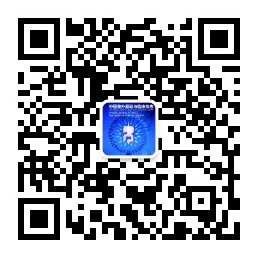| 1. |
Sung H, Ferlay J, Siegel RL, et al. Global cancer statistics 2020: GLOBOCAN estimates of incidence and mortality worldwide for 36 cancers in 185 countries. CA Cancer J Clin, 2021, 71(3): 209-249.
|
| 2. |
Brenton JD, Carey LA, Ahmed AA, et al. Molecular classification and molecular forecasting of breast cancer: ready for clinical application? J Clin Oncol, 2005, 23(29): 7350-7360.
|
| 3. |
Steward L, Conant L, Gao F, et al. Predictive factors and patterns of recurrence in patients with triple negative breast cancer. Ann Surg Oncol, 2014, 21(7): 2165-2171.
|
| 4. |
中國抗癌協會腫瘤標志專業委員會乳腺癌標志物協作組. 基于靶標指導乳腺癌精準治療標志物臨床應用專家共識(2022版). 中國癌癥防治雜志, 2022, 14(4): 346-362.
|
| 5. |
You KS, Yi YW, Cho J, et al. Potentiating therapeutic effects of epidermal growth factor receptor inhibition in triple-negative breast cancer. Pharmaceuticals (Basel), 2021, 14(6): 589. doi: 10.3390/ph14060589.
|
| 6. |
曾憲濤, 劉慧, 陳曦, 等. Meta分析系列之四: 觀察性研究的質量評價工具. 中國循證心血管醫學雜志, 2012, 04(4): 297-299.
|
| 7. |
Aziz O, Constantinides V, Tekkis PP, et al. Laparoscopic versus open surgery for rectal cancer: a meta-analysis. Ann Surg Oncol, 2006, 13(3): 413-424.
|
| 8. |
Gasparini P, Fassan M, Cascione L, et al. Androgen receptor status is a prognostic marker in non-basal triple negative breast cancers and determines novel therapeutic options. PLoS One, 2014, 9(2): e88525. doi: 10.1371/journal.pone.0088525.
|
| 9. |
Huang T, Xiang J, Wang Y, et al. Changes of EGFR and SMC4 expressions in triple-negative breast cancer and their early diagnostic value. Gland Surg, 2021, 10(3): 1118-1124.
|
| 10. |
Kanapathy Pillai SK, Tay A, Nair S, et al. Triple-negative breast cancer is associated with EGFR, CK5/6 and c-KIT expression in Malaysian women. BMC Clin Pathol, 2012, 12: 18. doi: 10.1186/1472-6890-12-18.
|
| 11. |
Li RH, Huang WH, Wu JD, et al. EGFR expression is associated with cytoplasmic staining of CXCR4 and predicts poor prognosis in triple-negative breast carcinomas. Oncol Lett, 2017, 13(2): 695-703.
|
| 12. |
Nogi H, Kobayashi T, Suzuki M, et al. EGFR as paradoxical predictor of chemosensitivity and outcome among triple-negative breast cancer. Oncol Rep, 2009, 21(2): 413-417.
|
| 13. |
Nozoe T, Mori E, Iguchi T, et al. Immunohistochemical expression of epidermal growth factor receptor in breast cancer. Breast Cancer, 2011, 18(1): 37-41.
|
| 14. |
Rakha EA, El-Sayed ME, Green AR, et al. Prognostic markers in triple-negative breast cancer. Cancer, 2007, 109(1): 25-32.
|
| 15. |
Rydén L, Jirstr?m K, Haglund M, et al. Epidermal growth factor receptor and vascular endothelial growth factor receptor 2 are specific biomarkers in triple-negative breast cancer. Results from a controlled randomized trial with long-term follow-up. Breast Cancer Res Treat, 2010, 120(2): 491-498.
|
| 16. |
Tan DS, Marchió C, Jones RL, et al. Triple negative breast cancer: molecular profiling and prognostic impact in adjuvant anthracycline-treated patients. Breast Cancer Res Treat, 2008, 111(1): 27-44.
|
| 17. |
Tang Y, Zhu L, Li Y, et al. Overexpression of epithelial growth factor receptor (EGFR) predicts better response to neo-adjuvant chemotherapy in patients with triple-negative breast cancer. J Transl Med, 2012, 10 Suppl 1(Suppl 1): S4. doi: 10.1186/1479-5876-10-S1-S4.
|
| 18. |
萬宇, 黃建軍, 包剛. 三陰性乳腺癌的臨床病理特征和EGFR、Ki67的表達及相關性. 江西醫藥, 2016, 51(4): 291-293, 300.
|
| 19. |
馮傳寶. EGFR與VEGF在三陰性乳腺癌中的表達及意義. 中國現代醫生, 2017, 55(14): 32-34, 37.
|
| 20. |
劉莉萍, 孫鳳玲, 魏亞, 等. 表皮生長因子受體、p53、Ki-67在三陰性乳腺癌中的表達及其意義. 腫瘤研究與臨床, 2013, 25(10): 669-671.
|
| 21. |
吉茹, 李敬永, 趙秀蘭, 等. 三陰性乳腺癌臨床病理特點及與EGFR表達關系的探討. 中國腫瘤臨床, 2010, 37(1): 32-35.
|
| 22. |
居紅格, 李峰, 馬俊兵, 等. 三陰型乳腺癌中RHBDD1和EGFR的表達及相關性分析. 臨床與實驗病理學雜志, 2020, 36(4): 396-400.
|
| 23. |
張淼, 任力, 胡蓉, 等. Ki67、EGFR在三陰性及非三陰性乳腺癌中的表達與相關性分析. 武警醫學, 2014, 25(12): 1256-1258.
|
| 24. |
張言敏, 李紀崗, 郭雪芹, 等. 三陰性乳腺癌的臨床病理特征及CK5/6、E-cad、EGFR的表達的臨床意義. 世界最新醫學信息文摘(連續型電子期刊), 2018, 18(10): 24, 34.
|
| 25. |
張輝運. CK5/6和EGFR為三陰性乳腺癌預后不良因素的分析. 大連: 大連醫科大學, 2011.
|
| 26. |
徐英杰, 李巍. 三陰性乳腺癌早期患者雄激素受體、Ki67、p53、表皮生長因子受體表達水平及其與臨床病理特征關系研究. 陜西醫學雜志, 2021, 50(12): 1594-1597.
|
| 27. |
李華民. EGFR、Ki67在三陰性與非三陰性乳腺癌中的表達及其與TNBC病理特征的相關性. 實用癌癥雜志, 2017, 32(11): 1759-1762.
|
| 28. |
李曉旭. P53, Ki67, EGFR在三陰性乳腺癌中的表達及臨床意義. 鄭州: 鄭州大學, 2014.
|
| 29. |
李玥. EGFR和E-cad在三陰性乳腺癌中的表達及臨床意義. 鄭州: 鄭州大學, 2015.
|
| 30. |
汪鵬剛. 三陰性乳腺癌的臨床病理特征及EGFR與VEGF在三陰性乳腺癌中的表達及意義. 太原: 山西醫科大學, 2016.
|
| 31. |
王超群, 王艷, 黃必飛, 等. 三陰性和非三陰性乳腺癌中Fascin-1和EGFR表達的相關性研究. 中華內分泌外科雜志, 2018, 12(2): 115-117, 145.
|
| 32. |
栗艷松. EGFR、Ki-67在三陰性乳腺癌中的表達及相關性臨床研究. 河北醫藥, 2015, 37(13): 1936-1938.
|
| 33. |
董超, 黃遠麗, 徐正豐. Ki67、EGFR在三陰性乳腺癌中的表達及臨床意義. 世界最新醫學信息文摘, 2017, 17(52): 173-174.
|
| 34. |
覃咸雄, 孫圣榮. CK5/6、EGFR和E-cadhenrin在三陰性乳腺癌中的表達及意義. 解剖學研究, 2018, 40(3): 169-173.
|
| 35. |
趙鴻, 薛娣, 冷冬妮. 受體三陰性乳腺癌中CK14和EGFR的檢測及臨床意義. 臨床醫學工程, 2011, 18(6): 862-863.
|
| 36. |
Mendelsohn J, Baselga J. Status of epidermal growth factor receptor antagonists in the biology and treatment of cancer. J Clin Oncol, 2003, 21(14): 2787-2799.
|
| 37. |
Kumar R, George B, Campbell MR, et al. HER family in cancer progression: from discovery to 2020 and beyond. Adv Cancer Res, 2020, 147: 109-160.
|
| 38. |
Tian X, Gu T, Lee MH, et al. Challenge and countermeasures for EGFR targeted therapy in non-small cell lung cancer. Biochim Biophys Acta Rev Cancer, 2022, 1877(1): 188645. doi: 10.1016/j.bbcan.2021.188645.
|
| 39. |
王璐, 林清, 陸春花, 等. EGFR在三陰性乳腺癌中的表達及放療后表達變化的意義. 醫學研究雜志, 2017, 46(3): 120-123.
|
| 40. |
馬靜, 任光輝, 馬斌林. 三陰性乳腺癌中EGFR、CK5/6的表達及臨床意義. 新疆醫學, 2015, 45(1): 13-16.
|
| 41. |
賈占莉, 劉月平. EGFR、CK5/6在三陰性乳腺癌中的表達及其與臨床病理特征關系的探討. 中國抗癌協會腫瘤標志物專業委員會, 河南省抗癌協會. 2018年中國腫瘤標志物學術大會暨第十二屆腫瘤標志物青年科學家論壇. 鄭州: 中國抗癌協會腫瘤標志物專業委員會, 河南省抗癌協會, 2018.
|
| 42. |
Kyriakopoulou K, Kefali E, Piperigkou Z, et al. Advances in targeting epidermal growth factor receptor signaling pathway in mammary cancer. Cell Signal, 2018, 51: 99-109.
|
| 43. |
Cox TR. The matrix in cancer. Nat Rev Cancer, 2021, 21(4): 217-238.
|
| 44. |
Lepedda AJ, Nieddu G, Piperigkou Z, et al. Circulating heparan sulfate proteoglycans as biomarkers in health and disease. Semin Thromb Hemost, 2021, 47(3): 295-307.
|
| 45. |
Franchi M, Masola V, Bellin G, et al. Collagen fiber array of peritumoral stroma influences epithelial-to-mesenchymal transition and invasive potential of mammary cancer cells. J Clin Med, 2019, 8(2): 213. doi: 10.3390/jcm8020213.
|
| 46. |
Liang Y, Zhang H, Song X, et al. Metastatic heterogeneity of breast cancer: molecular mechanism and potential therapeutic targets. Semin Cancer Biol, 2020, 60: 14-27.
|
| 47. |
Micalizzi DS, Ford HL. Epithelial-mesenchymal transition in development and cancer. Future Oncol, 2009, 5(8): 1129-1143.
|
| 48. |
Dongre A, Weinberg RA. New insights into the mechanisms of epithelial-mesenchymal transition and implications for cancer. Nat Rev Mol Cell Biol, 2019, 20(2): 69-84.
|
| 49. |
Sznurkowska MK, Aceto N. The gate to metastasis: key players in cancer cell intravasation. FEBS J, 2022, 289(15): 4336-4354.
|
| 50. |
Rau A, Janssen N, Kühl L, et al. Triple targeting of HER receptors overcomes heregulin-mediated resistance to EGFR blockade in colorectal cancer. Mol Cancer Ther, 2022, 21(5): 799-809.
|
| 51. |
Lim SO, Li CW, Xia W, et al. EGFR signaling enhances aerobic glycolysis in triple-negative breast cancer cells to promote tumor growth and immune escape. Cancer Res, 2016, 76(5): 1284-1296.
|
| 52. |
李星枝, 王艦梅, 肖秀麗, 等. GATA-3和EGFR在乳腺癌中表達的相關性及其與分子亞型、臨床病理資料的關系. 川北醫學院學報, 2021, 36(4): 414-418.
|




